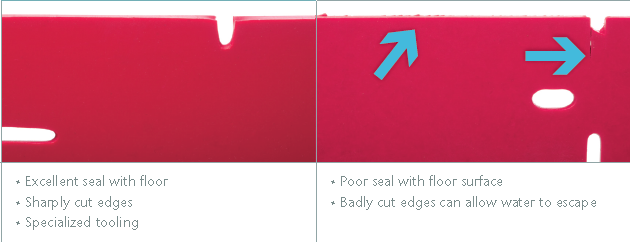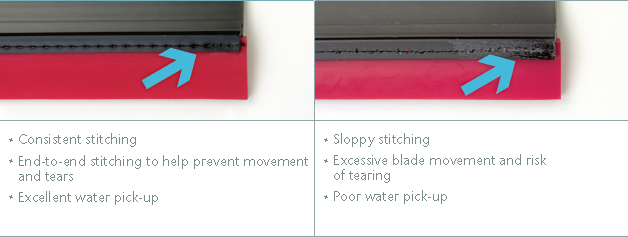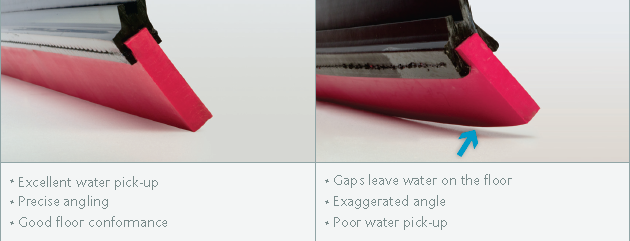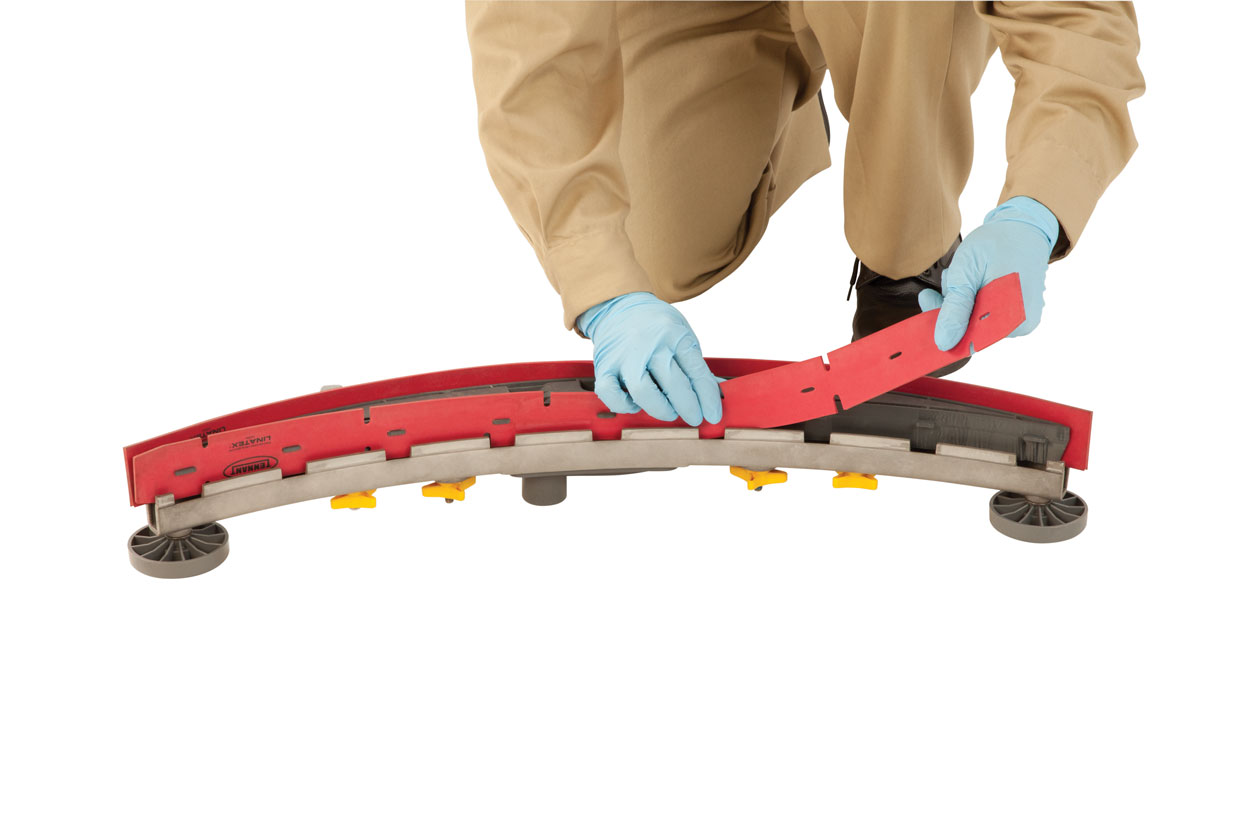Your shopping cart is empty.
Maximize Your Squeegee: 5-Point Checklist
Posted in Cleaning Solutions, Best Practices,
Squeegee Selection and Maintenance
The squeegee is an integral part of a floor scrubber to maximize the collection and pick-up of liquid. Without a properly maintained squeegee, your machine may leave streaks, debris or water on the floor, resulting not only in wasted time and rework, but also increased risk of slip and fall accidents.
The correct fit helps reduce downtime and service calls for your machine, which saves you time and money.
Every 30 minutes of extra cleaning equals $259 in extra labor costs per month, or $3,151 annually.*
Here are 5 things to check to ensure you’re using a high quality squeegee on your machine:
- Cut: Ensure the squeegees you purchase are precisely cut to ensure a tight seal, which leads to better water pick-up.

- Mounting holes: Ensure the squeegees you purchase are designed specifically for your type of cleaning machine, as misaligned holes can lead to stretching and tearing.
- Stitching: Poor stitching can lead to excessive blade movement and an increased chance of tearing.

- Angle: The angle at which the squeegee contacts the floor makes a difference in water pick-up.

- Material: Selecting the proper material for your application is critical for efficient water control and pick-up.
Frequently Asked Questions
How does better water pick-up reduce my overall cost?
Better cleaning performance requires less rework, resulting in lower labor costs, reduced risk of safety claims and lower costs for maintenance and parts.
Aren’t all squeegees the same?
No—although there are plenty of look-alike squeegees that claim to work just as well, the best choice is the OEM squeegee designed for your machine.
How do I get more life out of a squeegee?
A squeegee has four edges that can touch the floor. By rotating it on a regular basis, you can get more life out of a single squeegee.
How do I know if I am using a Linatex® squeegee?
You’ll know you’re using Linatex® because the squeegee itself is branded with the Linatex® name. If you don’t see that marking, you’re most likely using red gum rubber. Gum rubber is the most cost-effective, but it offers lower quality and performance — meaning you’ll go through blades more quickly and spend more in the long run.
What type of squeegee works best for different floor types?
The right squeegee material depends on the surface you’re cleaning:
Linatex®
- Best for: Wet or uneven concrete floors, warehouse aisles, and production plants with minor surface irregularities.
- Why choose it: Durable and dependable with strong water recovery in demanding industrial environments. The Airoflex Linatex® design uses arrow-shaped valves for more consistent pickup across uneven floors.
Primothane®
- Best for: Oily, greasy, or heavily textured surfaces such as grouted tile, luxury vinyl tile (LVT), and rubber athletic tracks.
- Why choose it: Exceptional resistance to petroleum and solvents while maintaining flexibility on irregular floors. The Airoflex Primothane® design maintains floor contact and can reduce cleaning time on challenging surfaces.
Urethane
- Best for: Manufacturing, garages, and food processing facilities where floors are exposed to petroleum- or chemical-based liquids.
- Why choose it: High chemical and abrasion resistance ensures longer life in tough environments.
Gum Rubber
- Best for: Smooth, even indoor surfaces such as vinyl tile or terrazzo.
- Why choose it: The most economical initial option, but it wears down much faster than premium materials like Linatex®. Because it requires more frequent replacements, it often ends up costing more in the long run.
Learn which squeegee material is best for your floors by downloading our squeegee material selection guide.
* Based on using a 32-inch rider scrubber on a 150,000 ft cleanable space. Assumes $17.27 per hour wage (According to the U.S. Bureau of Labor Statistics, May 2024, Median Hourly Wage) and 30 days of cleaning per month.


